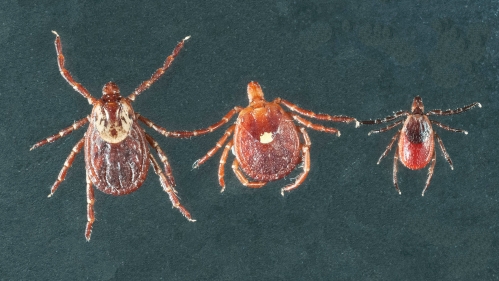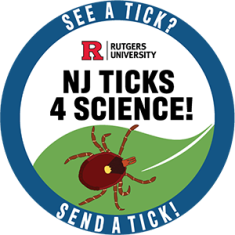Ticks and Tick-borne Disease

Diseases Transmitted by Ticks in New Jersey
While Lyme disease (transmitted by blacklegged ticks) is the most common and well-known, there are several other diseases of concern:
- Anaplasmosis (blacklegged ticks)
- Babesiosis (blacklegged ticks)
- Ehrlichiosis (lone star ticks)
- Rocky Mountain Spotted Fever (American dog ticks)
- Powassan virus (blacklegged ticks, woodchuck ticks)
What if I find a tick?
First
Remove it promptly. You may want to save the tick for later ID (see Next). Perform a full tick check in case there are others. Remove clothing and tumble dry on high heat for 1 hour to kill additional ticks.
How to Properly Remove a Tick
Next
Knowing the tick's species, life stage, and engorgement level can help you determine your risk of tick-borne disease. You may be able to bring it to your county's cooperative extension office or mosquito control agency for Tick ID, check with them for more information. You can also use this online tool from the University of Rhode Island to identify them yourself.
Be on the lookout for symptoms of a tick-borne disease, such as fever, headache, muscle ache, or rash. Should symptoms develop, see a physician immediately and tell them about the tick bite.
In the Future
Prevent future tick bites by wearing repellents, avoiding tick-infested areas, and performing frequent tick checks.
Chemical control should always be a last resort as the pesticides sprayed for ticks will also kill beneficial insects, like butterflies and bees.

NJ Ticks 4 Science! is a citizen science project organized by the Rutgers Center for Vector Biology. Our goal is to create a tick map showing the changing distribution of ticks and tick-borne pathogens in NJ and bring more awareness to tick-borne disease.